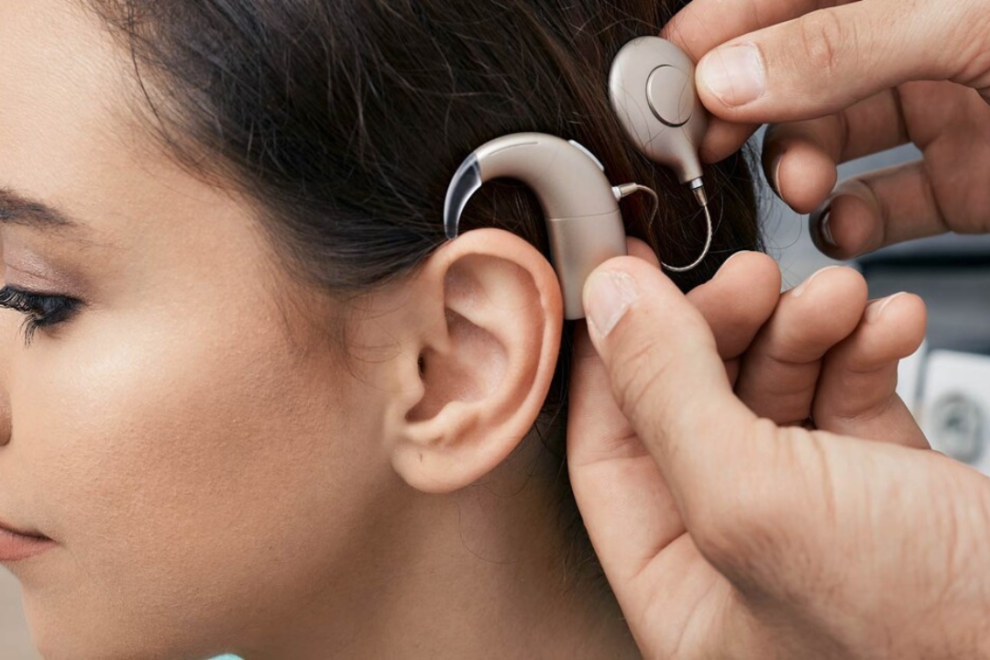Cochlear Implant Surgery in India: Restoring Hearing with Advanced Technology


Free Doctor Opinion
An implant has the following parts:
- A microphone, which picks up sound from the environment.
- A speech processor, which selects and arranges sounds picked up by the microphone.
- A transmitter and receiver/stimulator, which receive signals from the speech processor and convert them into electric impulses.
- An electrode array, which is a group of electrodes that collects the impulses from the stimulator and sends them to different regions of the auditory nerve.
An implant does not restore normal hearing. Instead, it can give a deaf person a useful representation of sounds in the environment and help him or her to understand speech.
The Cochlear Implant System
The implant system has three primary parts:
Microphone and Transmitter — The headpiece and transmitter is about the size of a quarter and is worn above the ear to pick up sounds. These sounds are sent to a speech processor.
Speech Processor — The speech processor is worn externally, either on a belt like a pager or behind the ear like a large hearing aid, to convert sound into a digital code that is transmitted to an implanted stimulator.
Implanted Stimulator — The implanted stimulator is a small component placed under the skin behind the ear. It receives a digital code from the speech processor and sends it to the auditory or hearing nerve. The brain interprets this signal and it is recognized as sound.
The small headpiece and transmitter is held in place by a magnet coupled to the implanted stimulator under the skin.
How Is An Implant Different From A Hearing Aid ?
Cochlear implants differ from hearing aids in two important ways:
Hearing aids simply amplify sounds. A cochlear implant, on the other hand, transforms speech and other sounds into electrical energy that is used to stimulate the hearing nerve in the inner ear.
Unlike most hearing aids, cochlear implants have both internal and external components. The implant system consists of an external speech processor and headset (worn behind the ear) and an internal, surgically implanted receiver/stimulator package with an electrode array.
Who Can Benefit From Cochlear Implants?
Any adult or child with bilateral (both ears) severe to profound sensorineural (nerve) hearing loss who obtains little or no benefit from hearing aids would be considered a candidate for a cochlear implant. Such deafness may be acquired following infection (such as meningitis), toxic effect of ototoxic drugs, trauma or age associated hearing loss.
Some children may be born with deafness. Such congenital hearing impairment is not uncommon with 1 to 2 out of every 1000 live births are born with significant hearing loss. Such children need to be identified at the earliest. This ensures that appropriate measures are undertaken to rehabilitate their hearing loss at a time when language skills can most easily be acquired. Many of these children may eventually require a cochlear implant.
Cochlear Implant Surgery
Cochlear implant surgery lasts about two to three hours and is performed while the patient is under general anesthesia. The electrode array is inserted into the cochlea. The receiver/stimulator is secured to the skull. At the end of the operation the implant is tested by attaching it to the processor and making sure that it is functioning well. An x-ray is also obtained to ensure that the electrode array is positioned correctly.
Typically, patients remain in the hospital for two nights. They have a bandage on their head which is removed after a few days. Patients return to school or work as soon as they feel well enough to do so, usually within a week of surgery.
Who Benefits From A Cochlear Implant ?
Cochlear implants can help patients with severe to profound sensorineural hearing loss in both ears who cannot benefit adequately from the use of hearing aids. People of all ages can qualify, from age 1-100. The ideal candidate has hearing loss of short duration. In children born with deafness, early implantation is preferred, so that they may experience speech sounds in time to begin learning language before the age of 2-3. In special cases, implantation may be performed on patients with long-term deafness.
Procedure
Before your child’s surgery, you’ll meet with an anesthesiologist and hospital admitting personnel and your child will complete any necessary tests. Tours of the hospital also can be arranged. Surgery is usually performed the following day.
Implant surgery is performed under general anesthesia and takes about three hours. During the operation, a surgeon will anchor a receiver-stimulator device in the temporal bone in the skull and insert what is called an “electrode array” into the cochlea, the small snail-shaped structure in the inner ear that contains the hearing organ.
First, an incision is made behind the ear to expose the temporal bone. The surgeon then positions the implant component against the bone. A hole is made in the temporal bone with a microscopic drill, allowing the surgeon access to the cochlea. A small hole is made in the wall of the cochlea and the electrode array is gently guided into the cochlea.
The internal receiver is secured in place on the skull bone with sutures and the incision is closed. A sterile dressing is placed on the incision.
Children generally remain in the hospital overnight and return home the day after surgery.
Recovery & Follow-up
Following surgery, your child will return home for four weeks to allow the swelling and soreness to subside and the incision to heal. After several days, the incision may get wet during bathing or showering.
Device Programming
The externally worn speech processor is activated about four weeks after surgery. The activation and programming is performed at the implant center. Programming for each implant is customized for the patient and takes about six hours over a two-day period.
Read Also :-
- Cervical Spine Surgery in India: Expert Care for Neck Pain and Spinal Health
- Chin and Cheek Augmentation in India: Enhance Your Facial Profile
- Sigmoidoscopy Surgery in India: Early Detection and Affordable Care for Colon Health
- Cholecystectomy (Gall Bladder Removal) in India: Safe & Affordable Surgery
- Carotid Endarterectomy in India: Advanced Stroke Prevention Surgery
- Carotid Artery Disease Surgery in India: Prevent Strokes with Advanced Care
Committed To Build Positive, Safe, Patient Focused Care.
High Quality
Care
Home Review
Medicine
All Advanced
Equipment
Book An Appointment

At We Care India, we offer complete medical services for your entire family, from routine check-ups to injury care, ensuring personalized attention and expert assistance for all your health needs.


